What is the roofing coating to choose for roofs of non-standard, dome-shaped? Sheet materials in this case will not fit, as there remains a large amount of waste. You can, of course, use ceramic tiles, but with a small diameter and this material cannot be laid, and there will be a lot of weighing such a roof. The only possible solution is the use of flexible bitumen tiles.
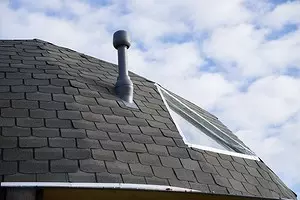
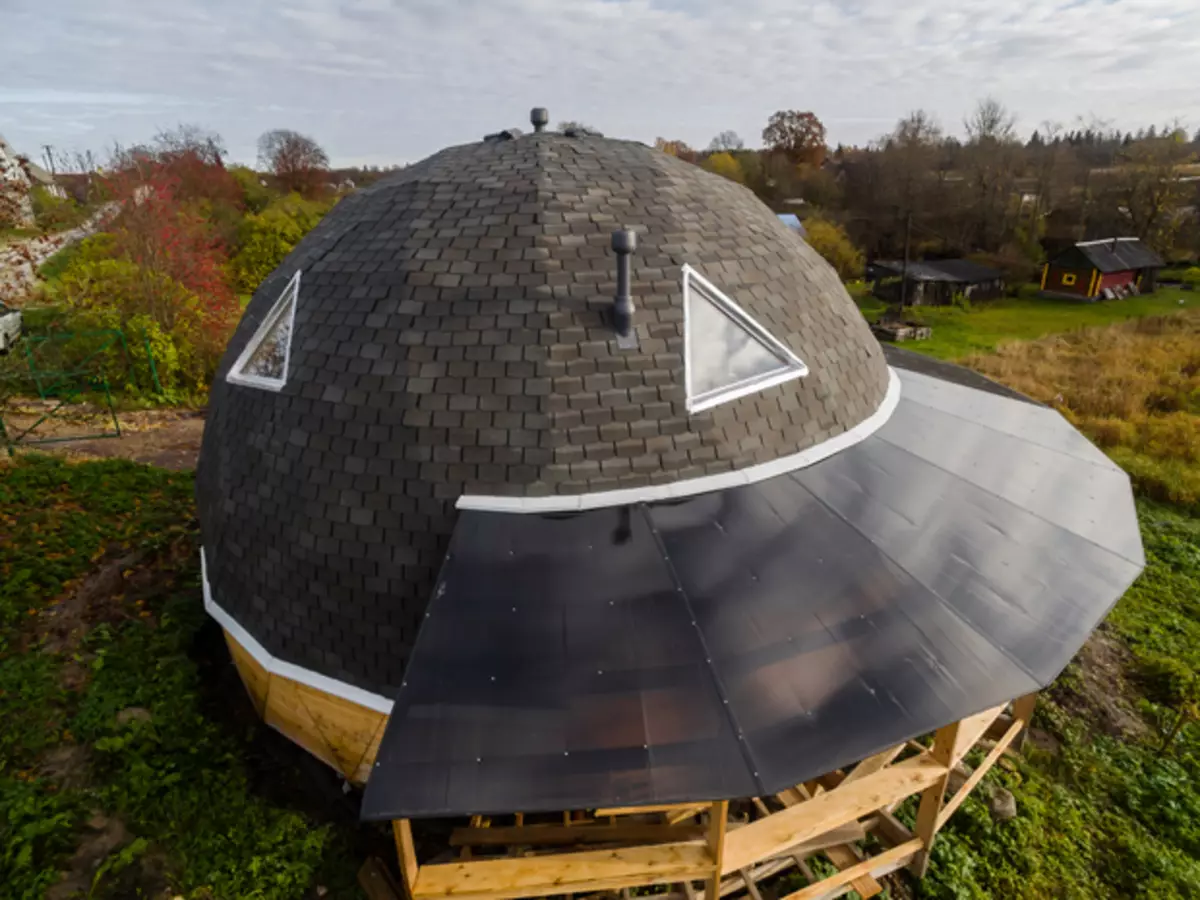
Photo: Tehtonol
What are domical buildings?
Dome houses are not just the desire to get away from the usual boning geometric forms. The building has many advantages. It is a hemisphere covering the greatest volume with the smallest surface area. Thus, using the minimum number of building materials, you can build a house with a maximum useful area. The domed house is the embodiment of the original idea "Make more, spending less": the construction of the dome is required by 60% less building materials than the construction of a regular house box with the same area of the enclosing surface.
For the construction of hemispherical homes, a geodesic or strata dome is used. In the first case, the main components are "ribs", hub (hub) and connectors (sleeves). As the "ribs" uses boards from larch or lvl-timber. The billets are cut according to the project, and then connect them into triangles under a well-defined angle using a special system consisting of a hub (central part of the "lock") and connector.
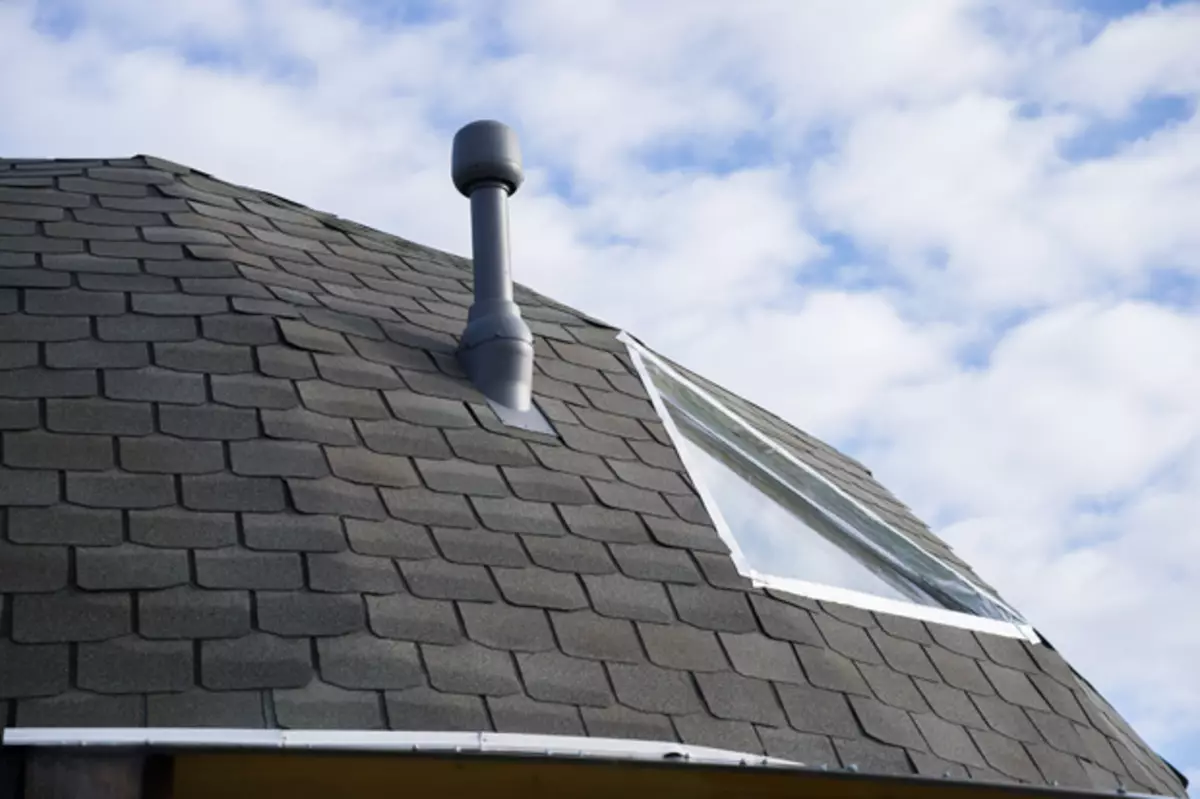
Photo: Tehtonol
As a result, it turns out a very durable frame, withsting wind gusts up to 100 m / s and load, much more than constructional norms.
With the erection of the stratified dome, the power frame is performed from the beams of the nodulenic structural bar, which as the rays converge at the top point.
After the carcass of the domes is fully assembled, the membrane is placed on it and they are squeezed by the plywood sheets of the increased moisture resistance of the FSF, then begin to lay the roofing coating.
Why is the flexible tile optimal for dome houses?
The design of the dome roof does not allow to lay heavy materials on it, so ceramic and cement-sand tile, slate and green roof can not be used in this case. Some projects laid durank, but due to the complexity of the process, the small durability and reliability of the material, many household owners refuse to cover this type of cover. As a result, the most optimal option is the flexible tile.
It is one or multi-layered sheets with a size of 100 x 32/33/35 cm with curly cuts on one edge. Due to the fact that the tile is based on no rotting glassball, each gentle has excellent flexibility and durability, which allows you to lay this coating on complex architectural or round roofs.
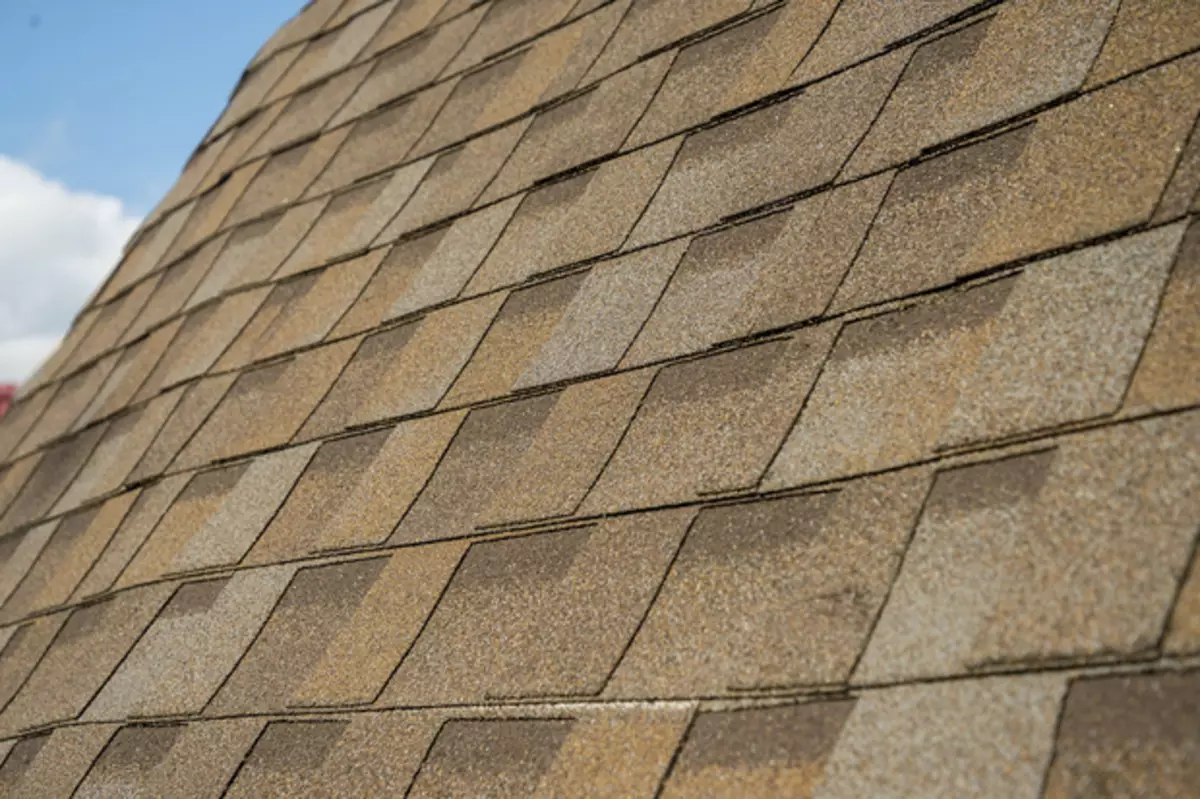
Photo: Tehtonol
Unlike other species, the soft tile is suitable for the roofs of any shape and complexity with an angle of a slope from 11.4 °, and the amount of waste during installation will not exceed 3-5%. (For comparison: the amount of waste metal on the roof of a complex shape can reach up to 60%, and this will lead to a significant increase in the cost of the roof as a whole.) In addition, when compliance with the installation technology, the flexible tile can be laid even on the vertical surfaces, which means that it is The most suitable material for dome structures.
Features of the roofing of roofing (on the example of a multi-layer flexible tile TechnoNIKOL Shinglas)
As a rafted in hemispherical homes, beams from the nodulenic structural or LVL timber are performed. The device of the ventilation gap in the dome roof is no different from its device in the classic shelter. On top of the rafter pulls the diffusion membrane and fix it with 50 × 50 mm bars impregnated with antiseptic. After that, the entire design is squeezed by triangular FSF plywood sheets with a thickness of 15 mm.
When installing the solid flooring from plywood between sheets, it is necessary to leave 3-5 mm gap to compensate for the linear expansion.
From a constructive point of view, the dome roof is a curved surface, so on top of plywood lay a solid self-adhesive lining carpet. At the top, exits are made for underpants ventilation, as well as, if necessary, arrange the penetration for the chimney. After laying the carpet, the cornisic strips are installed. Having completed the preparatory work, proceed to the tile laying.
Work on spherical roofs is carried out using the organization of the sample points and is possible only by the methods of industrial mountaineering.
Installation of tiles start with starting strip styling. It must be separated from the inflection of the cornice bar for 1-2 cm. The starting strip from the ordinary tile is missing in the places of imposition on the cornice bar with a bitumen mastic Fixer from Tekhnonikol. After that, nail on 12 nails.
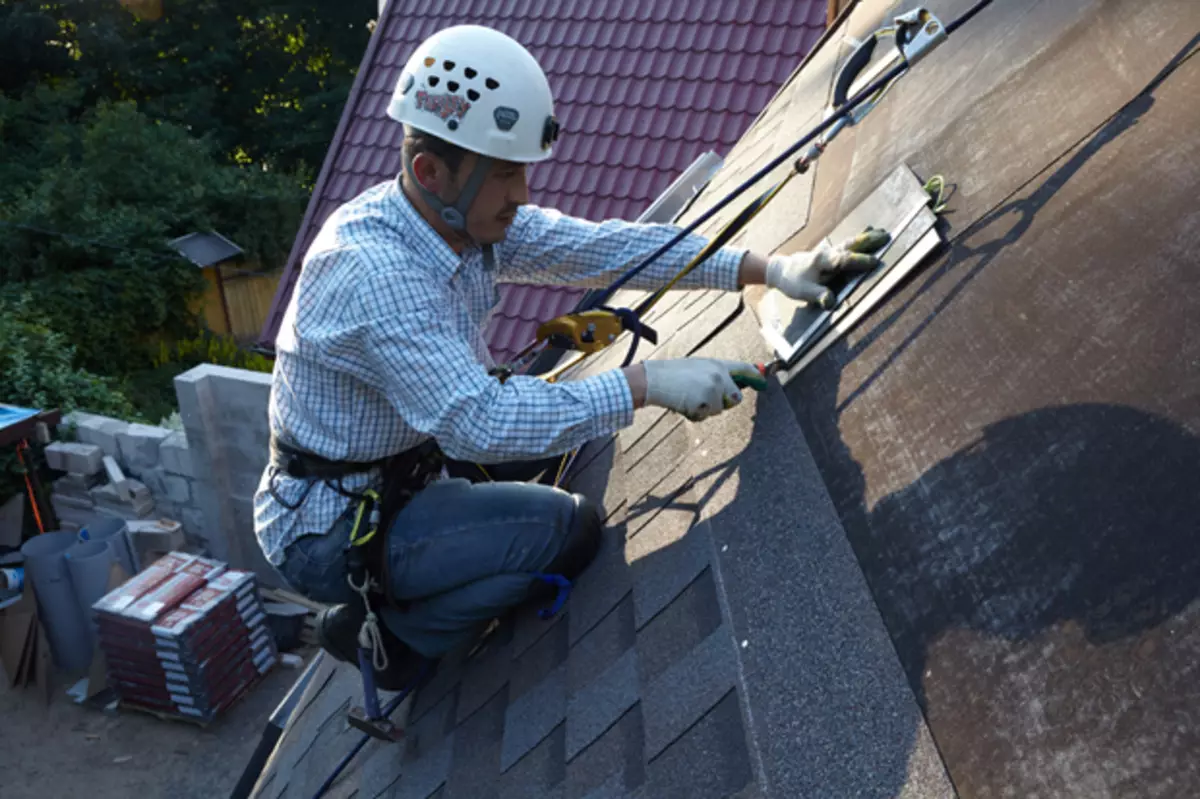
Photo: Tehtonol
The second and subsequent rows are placed by private tiled. Multilayer tiles of Technonikol Shinglas are fixed with galvanized roofing nails. The correct arrangement of the nails is indicated in the instructions for laying and depends on the shape of the cutting, and each nail must also break through the rice of the upper row, and the underlying gear. When installing the tiles, each shingle is attached with nails, the number of nails depends on the angle of inclination of the sphere and the shape of the tile.
Due to the lack of a skate in the dome design, a question of ventilating space appears. This problem is solved by installing in the roof of roofing fans.
The main work when installing multi-layer tiles on the dome is fitting and marking. Each segment requires trimming and adjusting the prohibition angle. Some segments falling on the roof beefing will need to be cut into several small sections, each of which compensates for the curvature of the roof.
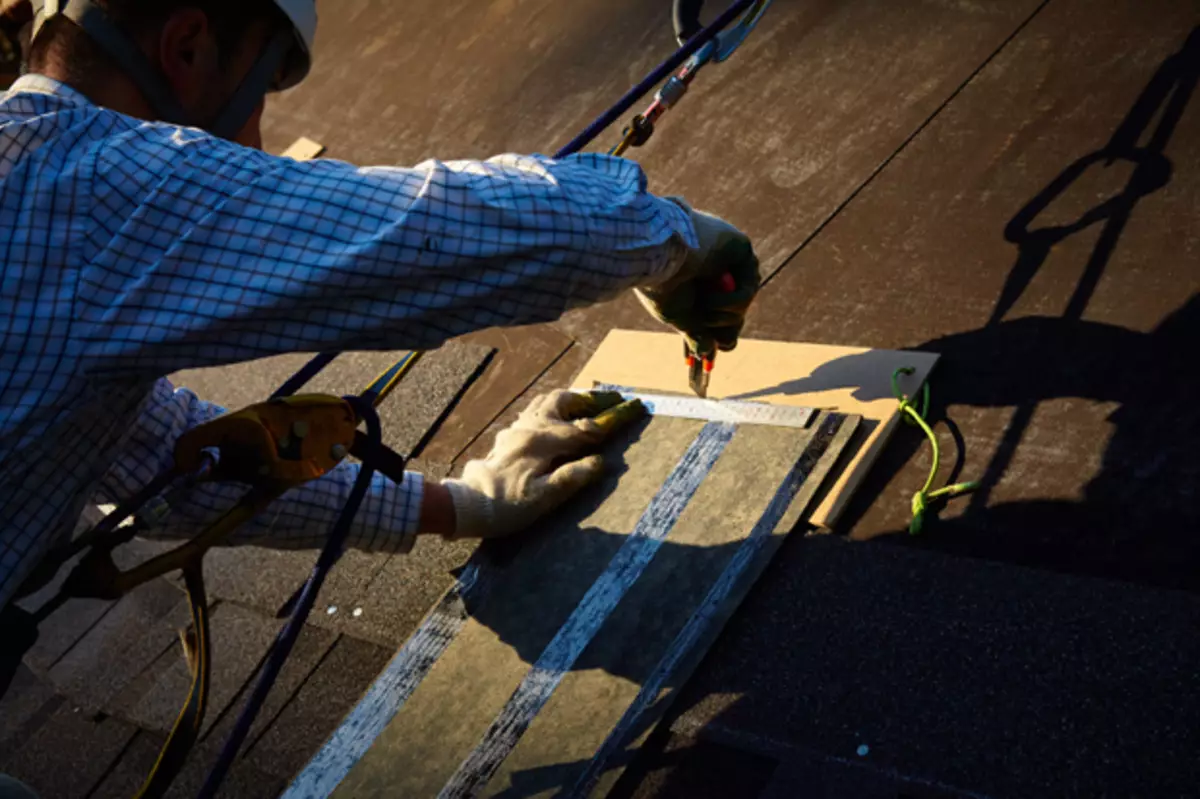
Photo: Tehtonol
Note that the percentage of waste with a neat and careful attitude to the material is relatively small (about 5%), which means that the multi-layer tile is indeed a cost-effective option for dome roofs.
